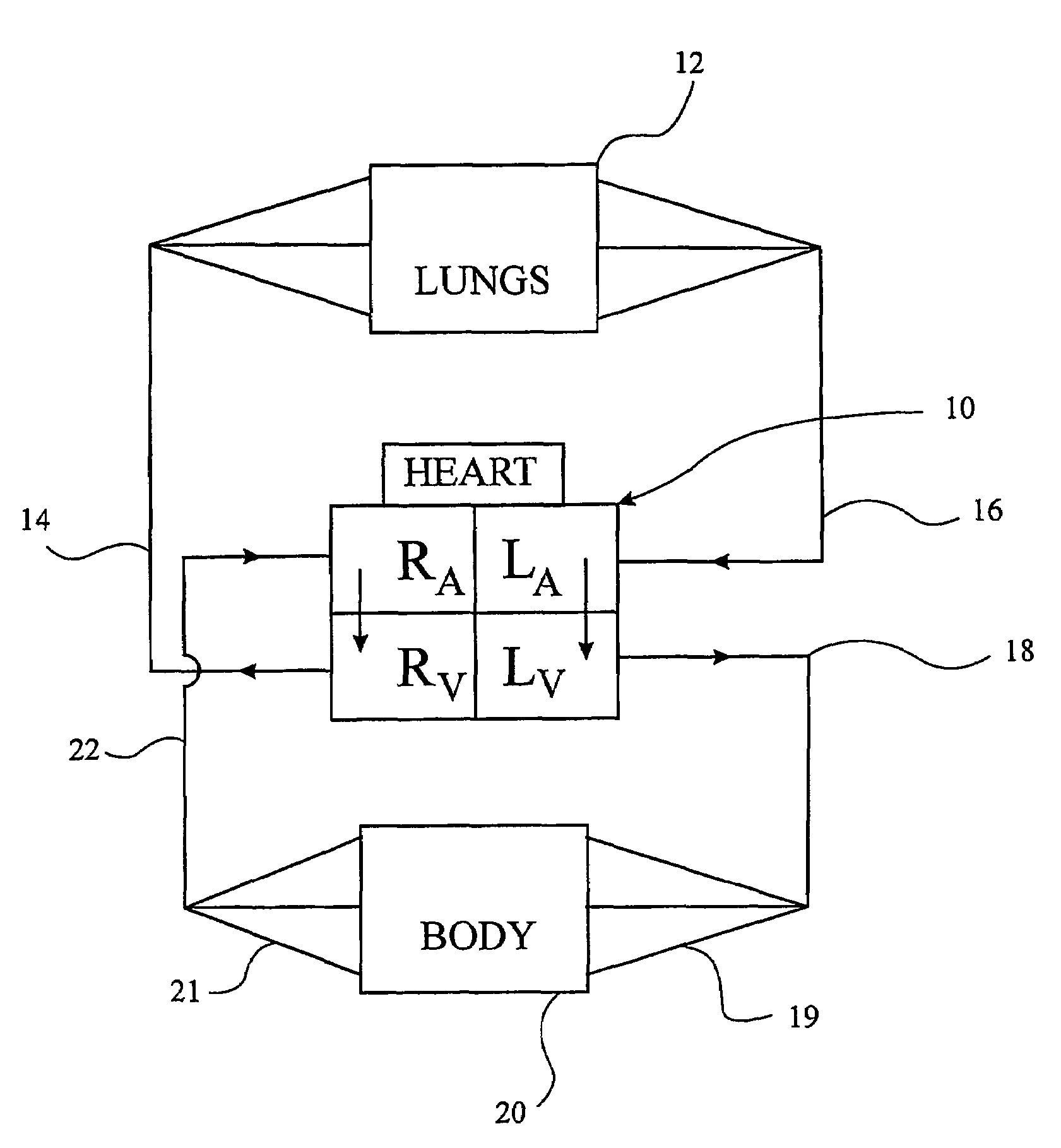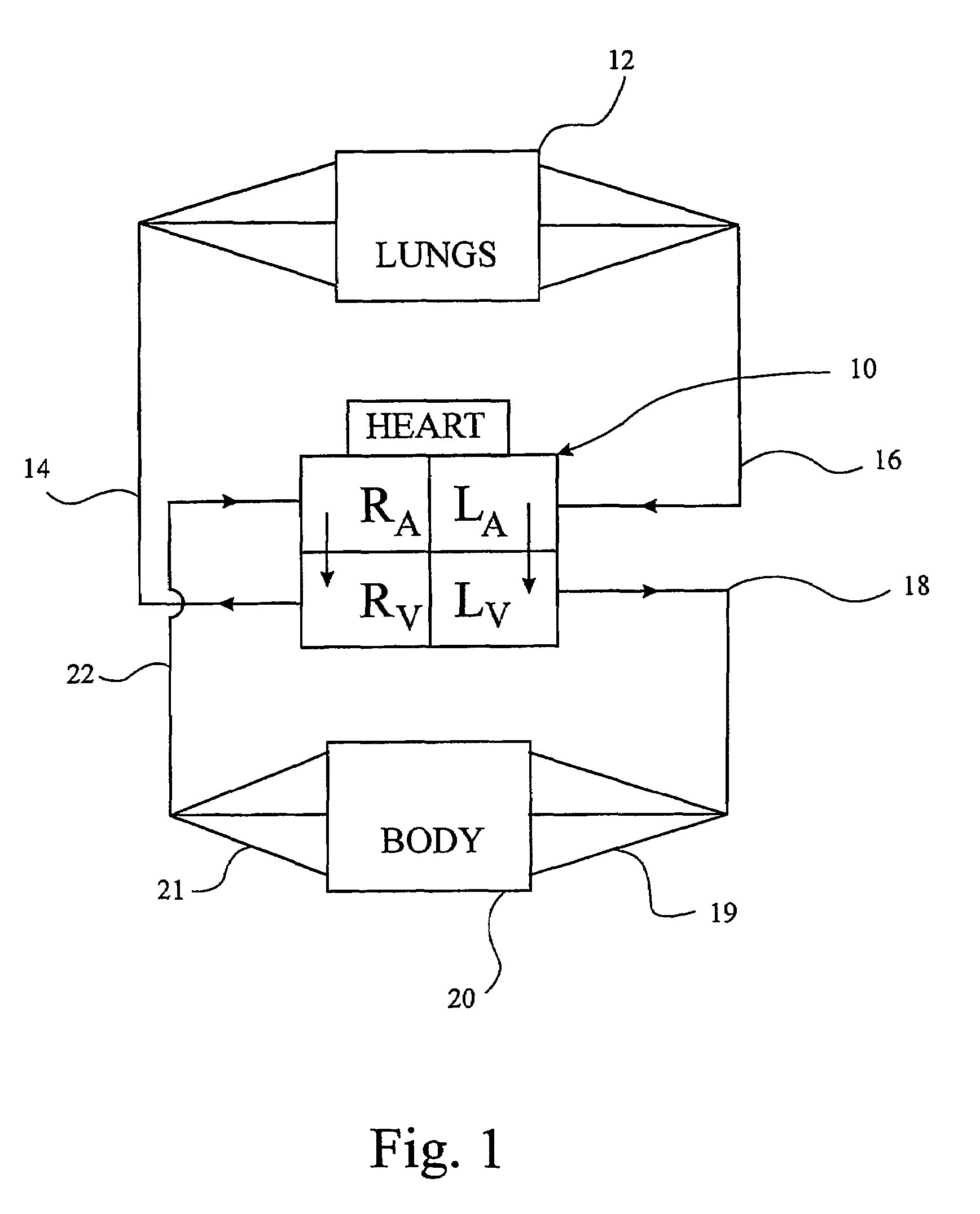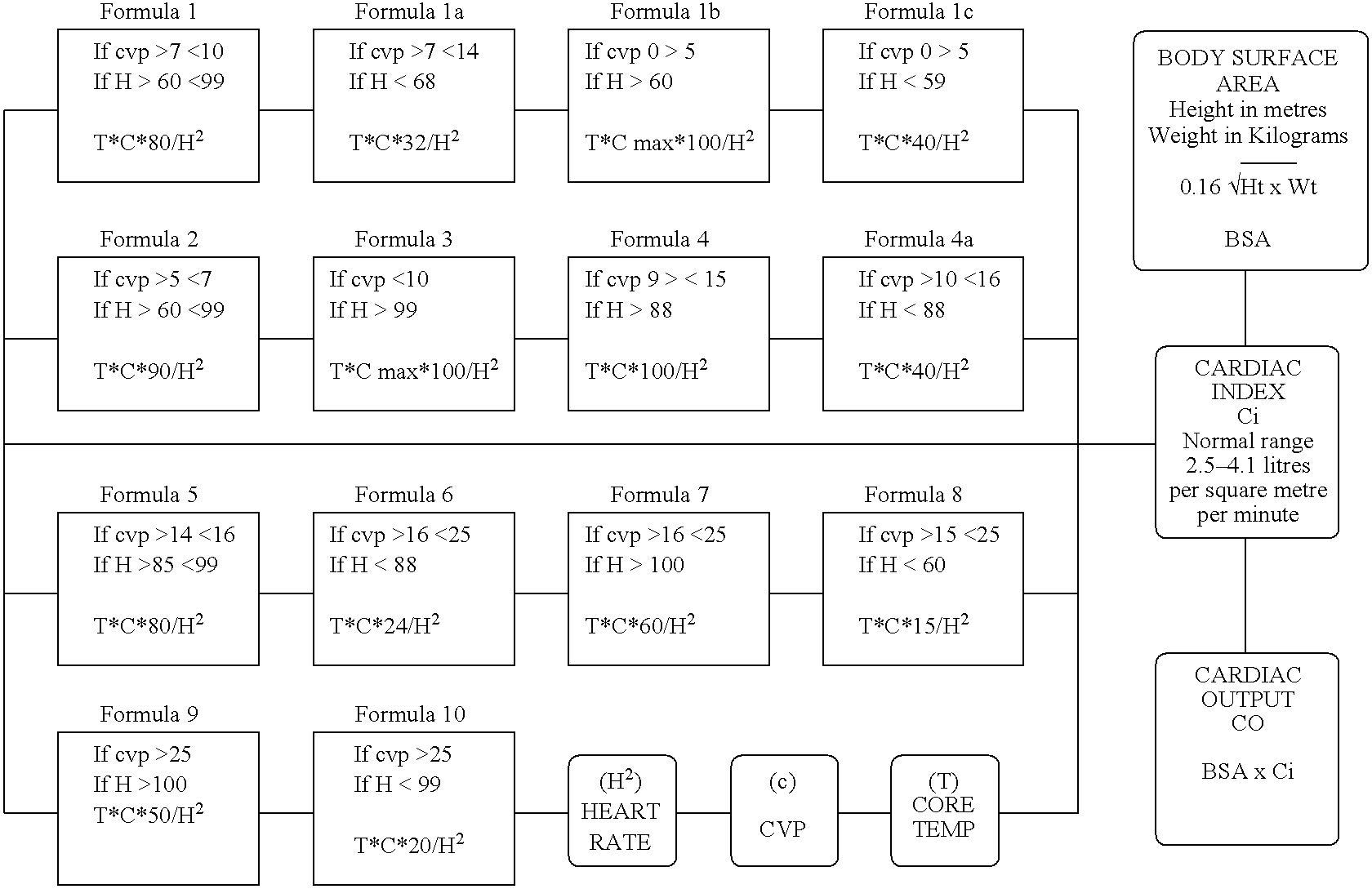Haemodynamic monitoring
a technology of haemodynamic monitoring and monitoring device, applied in the field of haemodynamic monitoring, can solve the problems of difficult measurement, complicated, and complex monitoring system, and achieve the effect of improving the accuracy of measurement results
- Summary
- Abstract
- Description
- Claims
- Application Information
AI Technical Summary
Problems solved by technology
Method used
Image
Examples
Embodiment Construction
[0019]The present invention is based on two fundamental realisations. The first is well known: namely that blood flow in the four sectors of the heart must be the same. However, it has now been appreciated that this fact leads to the following relationships:
MPAP=f(MAP,CVP) II
MPCWP=f(MPAP,CVP) III
[0020]The second novel realisation is that blood flow rate appears to be a function of the square of the heart rate (in fact the inverse of the square of the heart rate). This leads to the following relationship:
CI=f(HR2, CVP,T) IV
where HR is the heart rate and T is body core temperature.
[0021]Accordingly, the only parameters that need to be measured to enable determination of the essential haemodynamic parameters are MAP, HR, CVP and T, the remaining parameters MPAP, MPCWP and CI being determinable therefrom.
[0022]In accordance with a first aspect of the present invention, there is therefore provided a method of determining without direct measurement at least one of MPAP, MPCWP and CI...
PUM
 Login to View More
Login to View More Abstract
Description
Claims
Application Information
 Login to View More
Login to View More - R&D
- Intellectual Property
- Life Sciences
- Materials
- Tech Scout
- Unparalleled Data Quality
- Higher Quality Content
- 60% Fewer Hallucinations
Browse by: Latest US Patents, China's latest patents, Technical Efficacy Thesaurus, Application Domain, Technology Topic, Popular Technical Reports.
© 2025 PatSnap. All rights reserved.Legal|Privacy policy|Modern Slavery Act Transparency Statement|Sitemap|About US| Contact US: help@patsnap.com



